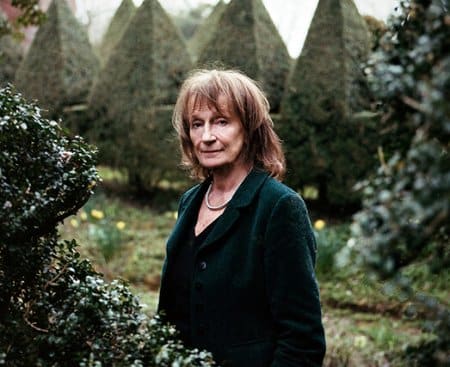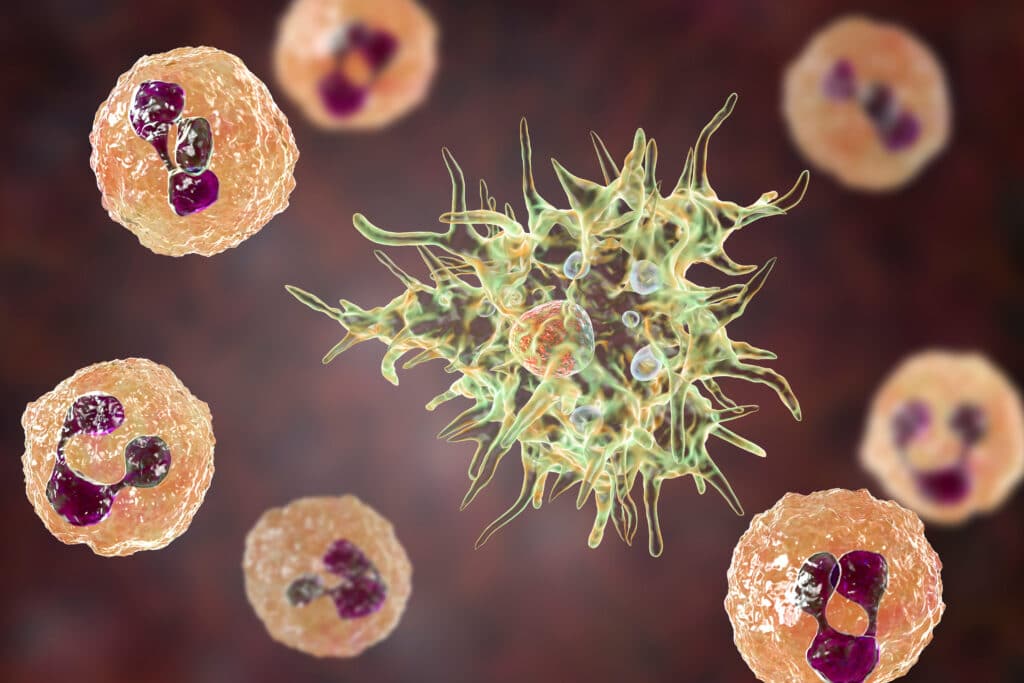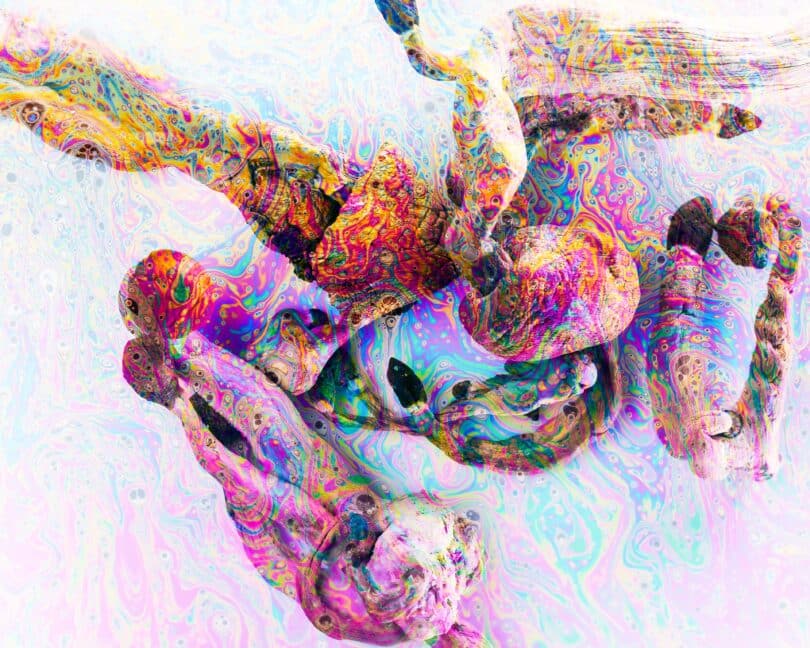Once dismissed, mocked, and known as the “crackpot countess” for her progressive views on psychedelics and altered states of consciousness; now, Amanda Feilding’s theories and studies are being examined under a new scope, and with the emergence of psychedelics as therapeutic compounds, she has now been dubbed the “queen of consciousness” or “first lady of LSD”.
Let’s take a closer look at the intriguing life of Amanda Feilding, what her research consisted of, and how she became a trailblazer of the modern-day psychedelic renaissance.
Who is Amanda Feilding?
Born Amanda Claire Marian Charteris in January 1943, also known as the Countess of Wemyss and March, and later taking the name Amanda Feilding, is an English drug policy reformer, psychedelic advocate and researcher, and lobbyist for legalization. Amanda is the youngest child of Basil and Margaret Feilding and the great-granddaughter of the 7th Earl of Denbigh, William Basil Percy Feilding. She grew up in a Tudor hunting lodge at Beckley Park outside of Oxford, England.

Amanda showed an interest in mysticism and altered states of consciousness from a very young age and at only 16 years old, she took off a solo adventure across the world to learn more about these concepts. Starting in England, she planned on hitchhiking to then Ceylon (currently Sri Lanka) where her godfather lived as a Buddhist monk. Although she didn’t make it all way to her destination, she got to the Syrian border where she spent some time with Bedouins, nomadic Arab tribes who have historically inhabited the desert regions around the middle east and northern Africa.
Upon her return to the UK, Amanda began studying Comparative Religions and Mysticism with Professor R.C. Zaehner, and Classical Arabic with Professor Albert Hourani. After that, she shifted her focus to researching altered states of consciousness, as well as psychology, physiology, and neuroscience. At the age of 22, Amanda Feilding had her first psychedelic experience. Although it’s not exactly how anyone hopes their first time will go (her coffee was spiked with a huge dose of LSD), she was amazed at the power of these drugs and wanted to learn more about them, although she did need a couple months to recover after her trip.
She went on to start the Foundation to Further Consciousness (later renamed Beckley Foundation) in 1998. The goal of her institution was to “promote a rational, evidence-based approach to global drug policies and initiates, directs, and supports pioneering neuroscientific and clinical research into the effects of psychoactive substances on the brain and cognition.”
The main focus of her research was finding different ways to expand the consciousness by use of psychedelics (including cannabis, LSD, psilocybin, ayahuasca, DMT, 5-MeO-DMT, and MDMA), meditation, and some other, more unconventional methods, to treat different mental disorders such as depression, anxiety, and drug/alcohol addiction. They also looked at these alternative treatment options as ways to enhance creativity, focus, and well-being.
From the Crackpot Countess…
As is often the case with brilliant and unorthodox individuals, Amanda was frequently called crazy for her work to alter and enhance consciousness. But she truly became infamous in 1970 when she performed a trepanation on herself (drilled a hole in her head) with a dental drill.
Trepanation was a substantial part of Feilding’s research on the mind. She made a short film about the process called Heartbeat of the Brain, which has been featured in a handful of other documentaries including the well-known 1998 one, A Hole in the Head. She also wrote an essay about it titled Blood and Consciousness, in which she hypothesized that “changing ratios of blood and cerebrospinal fluid underlie changes in consciousness” and that “the theory of the ‘ego’ as a conditioned reflex mechanism that controls the distribution of blood in the brain”.

In her 20s, so still around the early 1970s, she began microdosing with LSD, psilocybin, and other hallucinogens that were legal at the time. She went on to study these and similar compounds for decades, but it wasn’t till recently that she received the recognition she deserved. A quote from the guardian sums up how she came to have the “crackpot countess” reputation: “It would be fair to say … that her credibility as an advocate has not always been helped by her storied history with self-experimentation”.
…to the Queen of Consciousness
In my opinion, self-experimentation is brave and noble, and honestly, one of the most ethical option when testing out new treatment methods. I mean, if one truly believes in what they’re promoting, and they suffer from the conditions that their experiments are working to resolve, why wouldn’t they test it out on themselves. Albert Hoffman, Terrence McKenna, and many other prominent names in our industry learned through self-experimentation.
And eventually, it worked out for Amanda Feilding too. She is now regarded one of the pioneers of the modern-day psychedelic renaissance, with New Scientist magazine naming her the “Queen of Consciousness”. She led many novel studies on various hallucinogenic compounds, worth noting are the following that are frequently referenced by other researchers:
- Psilocybin with psychological support for treatment-resistant depression: an open-label feasibility study
- The effects of psilocybin and MDMA on between-network resting state functional connectivity in healthy volunteers
- Investigating the interaction between schizotypy, divergent thinking and cannabis use
- Neural correlates of the LSD experience revealed by multimodal neuroimaging
Feilding was also very prominent in activism and drug reform, focusing on research-based policy changes. In 2007, she hosted the Global Cannabis Commission and presented a report authored by lead drug policy analysts from around the world. They discussed better ways to regulate cannabis at both national and international levels. Then in 2011, Amanda brought together members of the Global Commission on Drug Policy Reform along with political leader from 14 different countries who were trying to change laws in their nations. The gathering took place at The House of Lords, which is the upper house of the UK parliament. At the event, they launched the Beckley Foundation Global Initiative for Drug Policy Reform.
Final thoughts
It’s interesting how much public perception played into Amanda Feilding’s life. Although she clearly never cared what people thought about her, their ideas of her being eccentric and “crazy” made a huge impact on how her message was received. When people weren’t too keen on psychedelic therapy and expanded consciousness, she was the “crackpot countess”, but when the world began to view psychedelics under a new light, Amanda became the “queen of consciousness”.
Regardless, Feilding helped pave the path for future psychedelic research to flourish, and not only that, she showed us that women could be whoever they wanted to be, even during a time when that was extremely difficult to do.
Hello readers. We’re happy to have you with us at Cannadelics.com; a news source here to bring you the best in independent reporting for the growing cannabis and hallucinogen fields. Join us frequently to stay on top of everything, and subscribe to our Weekly Newsletter, for updates straight to your email.









